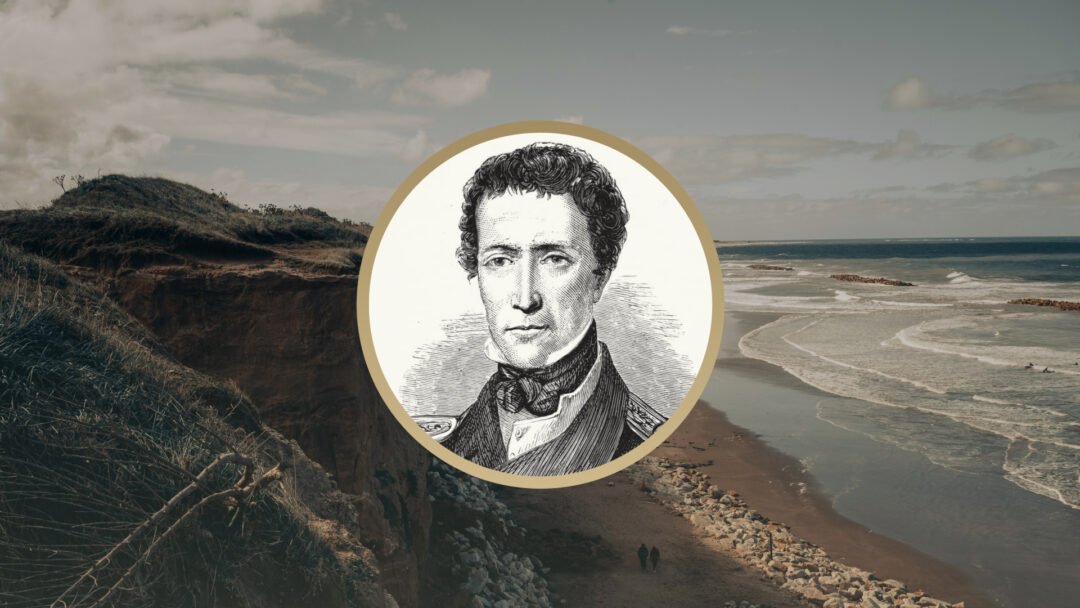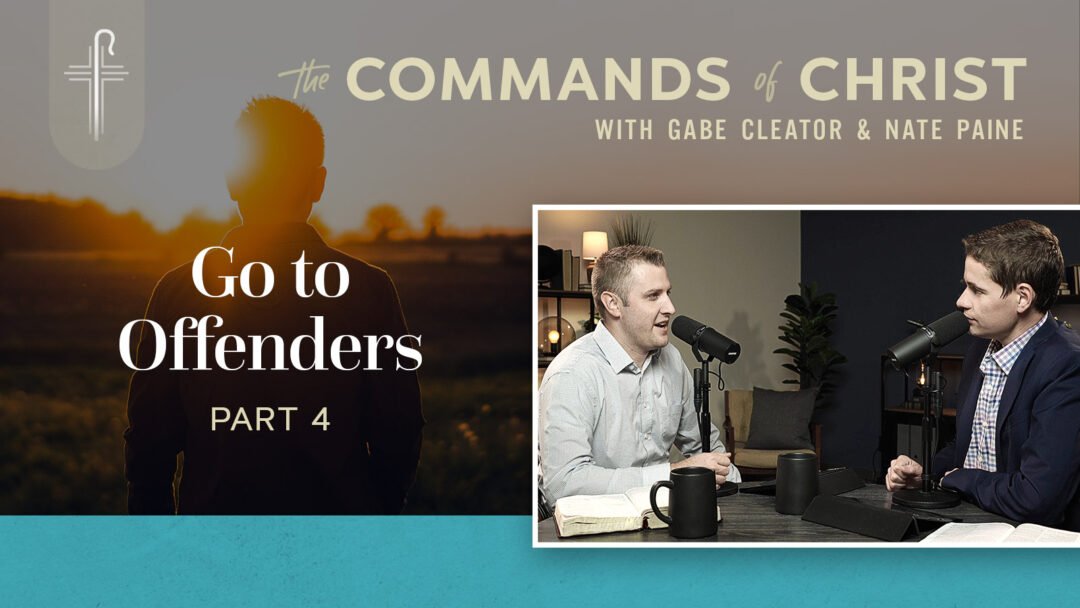It was spring of 1817. The two young missionaries on the deck of a ship peered into the distance toward the new, strange land where they would spend their lives. A long line of white sand greeted their eyes, a refreshing break from the brilliant blue skies and ocean waters they had seen for weeks. John Williams and his wife, Mary, had left behind the comforts and pleasures of home to come share the love of God to the recently discovered inhabitants of the South Seas islands.
The 30,000 islands of the Pacific present a daunting task to any missionary. Over one-third of the world’s known languages can be found on these islands. Fifteen million people live across a vast expanse of ocean that stretches over twenty million square miles of water. The tropical beauty of the surroundings belie the ugliness of sin. Infanticide was a common practice. Cannibalistic feasts were part of the superstitious religion of these islands.
These islands captured the heart of Welsh missionary John Williams, known historically as the “Martyr Missionary of Polynesia.” More than any other man, John Williams would be the instrument of God to open the islands of the South Pacific to mission work. The first island upon which Williams and his wife labored was the beautiful island of Tahiti, in what is now French Polynesia. A small mission work had already been founded there, and the young couple learned how to operate a mission station among cannibals.
Moving on from Tahiti, the Williams began pioneer work on the island of Raiatea in the Society Island group. John and Mary Williams were welcomed cordially by King Tamatoa, a monarch who had been looking for someone to come and give them the message of salvation. The Williams served on Raiatea for about five years. In this short period of time, they saw remarkable results beyond what they could have imagined! Their congregation was regularly in excess of 2,000 people. Hundreds were baptized and began to live as faithful Christians. Naked cannibals learned to wear clothing. All the wooden idols on the island were collected and burned. Stone idols were cast into the sea. Houses were built. Farms were cultivated. Animals, such as goats, horses, and cattle, were brought in from Australia. The natives were astonished by these domesticated animals! They called goats “birds with great teeth in their heads.” Horses were known as “great pigs that carry men.” Soon these animals were put to productive labor.
King Tamatoa prospered as he ruled in the fear of God. John Williams reduced the native language to writing and translated the Bible into Raiatean. Soon, the work was ready to be entrusted to national workers. Williams wrote to his parents in Wales, “I am engaged in the best of services, for the best of masters, and upon the best of terms.”
John Williams next turned his attention to an island in the Cook group called Rarotonga. Here he experienced similar success in his mission work. However, the mission work was not without its troubles. Several times there were violent plots upon his life. Malaria and other tropical diseases took their toll on the Williams family. Mary Williams lost several babies, which were buried in neat graves of rock and coral, monuments to the sacrifice of a missionary family.
After Rarotonga was thoroughly evangelized and the triumph of the Gospel was assured, John Williams again turned his attention eastward, toward the Samoan group of islands. It was during his years in Rarotonga that he planned the evangelization of the South Pacific. He knew that white men alone could not do the work. Native teachers who understood the culture, knew the languages, and were familiar with the seas were an important part of a missionary endeavor.
Williams took his example from the Lord Jesus, Who sent out His disciples in pairs to preach and teach in the rural villages of Galilee. The Apostle Paul also used national workers, such as Aristarchus and Tychicus, to evangelize the villages with the Gospel. Following this Biblical pattern, Williams commissioned a ship named The Messenger of Peace. The ship would serve as a mobile base of operations. As the missionary team sailed along, Williams would stop on various islands and leave native teachers to preach the love of God. Under the blessing of the Holy Spirit, island after island was evangelized.
In 1833, John and Mary Williams visited England for the first and only time. Mr. Williams was surprised to find himself a hero. Vast crowds thronged into the churches to hear him tell eagerly curious boys and girls about the needy cannibals of the South Pacific. Purses were opened to the cause. Young men and women resolved that, by God’s grace, they would become missionaries also.
While in England, John and Mary Williams celebrated their twentieth wedding anniversary—and almost their last one. He wrote this note for his wife to find on that anniversary morning: “My Dearest Mary, Twenty eventful years have rolled away since we were united in the closest and dearest earthly bond, during which time we have circumnavigated the globe . . . I sincerely pray that, if we are spared twenty years longer, the retrospect will afford equal or even greater cause for grateful satisfaction.”
On April 11, 1838, John and Mary Williams set sail from London, bound for the other side of the world. The wharves, docks, and bridges were lined with people who came to see them off. Because mortality was so high in the South Pacific, the couple made the difficult decision to leave their six-year-old son in England. As the ship pulled away, a kind relative lifted their young son Samuel high into the air so his parents could see him in the crowd. That morning, his loving father had written a note in Samuel’s journal, giving him a warm goodbye and a fatherly exhortation to live for Christ if perchance they never met again in this life: “The Lord bless thee, my dear boy, and keep thee; The Lord make his face to shine upon thee and be gracious unto thee; The Lord lift up his countenance upon thee and give thee peace.”
Only one year later, soon after he had arrived back in the South Pacific, John Williams set his sights upon the New Hebrides islands. It was known that the inhabitants of these islands were among the fiercest cannibals in the Pacific. Leaving his wife at the mission station on Upolu, Williams sailed toward the New Hebrides.
On the morning of November 20, 1839, John Williams prepared to land on the island of Erromango. In his Bible was later found a small scrap of paper upon which he had written these words of the Lord Jesus, “I have prayed for thee, that thy faith fail not.” This petition was gloriously answered on that day. He was brutally beaten with a war club, and his corpse was dragged into the dense vegetation to be cooked and eaten. He had loved the unlovely, and others would come to take his place.
The grief-stricken, native fellow-laborers of John Williams, watched the entire ordeal from the boat. They were the ones who had to tell Mrs. Williams the sad news. She received it with grace and Christian fortitude. Her eldest son, John, continued his father’s work in Samoa. Samuel, the little boy left in England, also became a messenger of the Prince of Peace. He carried the middle name Tamatoa, the name of the island king who had first welcomed his father to Raiatea.
John G. Paton, the son of a Scottish stocking-maker, would follow twenty years later the noble example of John Williams. Paton and his wife determined to labor in the New Hebrides islands, now called Vanuatu, to finish the work that John Williams had so nobly begun. By God’s grace, their effort was grandly successful, and the tongues of former cannibals and their descendants sing the praises of the Redeemer.
Sources and Further Reference:
Ellis, James. John Williams, The Martyr Missionary of Polynesia. London, England: Forgotten Books, 2015.





